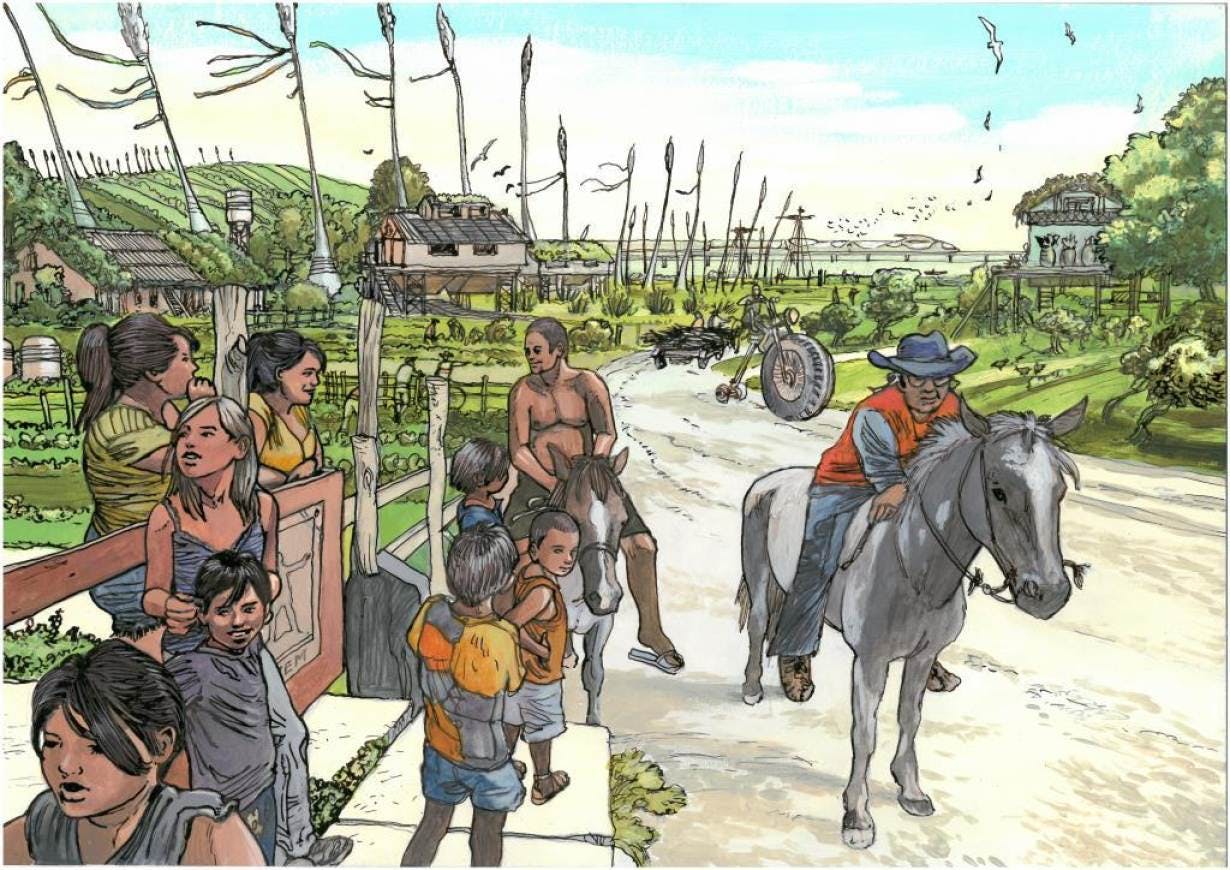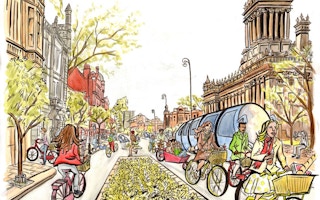Thanks to the success of Hollywood disaster films, from “Waterworld” to “The Day After Tomorrow”, it’s not hard to imagine an apocalyptic future as climate change takes hold.
Picturing a warmer but more habitable Earth, however - one with plentiful clean energy, and less pollution and waste - is more challenging because so few futuristic tales tell of such a world.
“People are naturally drawn toward disasters as stories. If you don’t have any jeopardy, you don’t really have a plot,” said James McKay, an engineer who runs a centre for low-carbon technologies and bioenergy at the University of Leeds, in northern England. “If everything’s going well, there’s not much dramatic tension.”
“
It’s really important to take people away from the dystopia idea, which switches everyone off when they hear all this terrible doom and gloom.
James McKay, climate fiction graphic novelist
But McKay, who for 20 years has moonlighted as a creator of comics, thinks he has found a way to overcome that: through publishing “graphic novels” that paint a picture, in drawings and stories, of a better future.
“It’s really important to take people away from the dystopia idea, which switches everyone off when they hear all this terrible doom and gloom,” he said. “We need to ask people to think about the positive view. Then they engage, and see this as a problem that needs a solution rather than being turned off.”
McKay’s first “climate fiction” graphic novel, “Dreams of a low carbon future”, developed with engineering doctoral students at the University of Leeds and local school children, looks at alternative visions for a warmer future.
Those range from a network of “sea gypsies” living on artificial islands in 2152, to a 2063 society where energy is generated from swaying reed beds, water is carefully recycled and people laugh at the idea that women ever bought dresses to wear only once.
That first novel included some apocalyptic aspects, because children “do gravitate naturally to the doom-laden stuff. They keep sticking zombies in there,” McKay admitted.

Photo: James McKay via Thomson Reuters Foundation
No more zombies
But a new book, due to be launched in November at the Thought Bubble comics festival in Leeds, focuses exclusively on “possible, plausible low-carbon transitions to a sustainable world” where almost all energy is renewable, economic systems take into account impacts on the environment, and “we’re not buying more and more”, McKay said.
“It’s trying to see how we got there from here, what that society looks like, and how it is living in it,” he said.
The project got its initial funding from the Royal Academy of Engineering’s Ingenious grants, which aim to help engineers find creative ways to engage with the wider public, improve their communications skills, and consider what impact their projects might have on people.
Another round of funding, for the second graphic novel, has come from the University of Leeds and Research Councils UK.
Both novels - the first is slick, colourful and more than 90 pages long - aim to reach people who have no particular interest in climate change and who “wouldn’t pick up a science textbook but would engage with interesting science fiction”, McKay said.
Planting an idea in people’s minds about what could happen in the future is a powerful step to making it a reality, as science fiction has proven repeatedly with its tales of fantasy innovations - from video-chatting to 3D printers and robot vacuum cleaners - that are now in common use.
When creating the latest novel, McKay and his team asked school children to imagine creative solutions to deal with climate change. They produced endless technological marvels - from underwater cities to spaceships big enough to tow the earth a bit further from the sun.
In each case, researchers and students together looked at the science behind the ideas, and then tried to determine which obstacles stood in the way of making them work.
What has been harder, McKay said, is to get the children to think about solutions that don’t involve shiny technology.
“They all come up with cool vehicles,” he said. “But it’s hard to get them to consider behavioural changes, lifestyle choices to reduce the demand for energy.”
Climate super heroes?
Those kinds of changes are hard to win broad public support for - and that is where new visions of the future are most critical, said Rachael Unsworth, a contributor to the climate comics project and a former University of Leeds sustainability teacher.
What needs to be conveyed, she said, is that “this is not about making sacrifices. It’s about saving the world.”
McKay said the graphic novels, drawn with the help of professional artists, do not aim to present a sewn-up vision of future solutions but rather “hint at things that could be a good idea”.
They include everything from compostable clothing to super-light carbon-foam airships powered by hydrogen cells.
“If we knew how to solve all the problems we’d be geniuses and win the Nobel Prize,” McKay said.
With some 6,000 copies of the first novel in circulation, there has been a “really positive reaction”, he said. People have taken the book into schools to spur classroom discussions, or used it with dyslexic children who have trouble reading.
The next edition will have a print run of 3,000 copies, and potentially more if additional funding can be found.
He hopes the “cli-fi” graphic novel concept could eventually be turned into a new kind of climate change film - a bit more “The Martian” than “Mad Max”.
Unsworth agrees that finding ways to reach a much bigger audience, and get them thinking, is vital.
“The more people who can be enlightened and enthused about very different types of futures, the better the chance we stand of being able to bring them about,” she said.
This story is published with permission from Thomson Reuters Foundation, the charitable arm of Thomson Reuters, that covers humanitarian news, climate change, women’s rights, trafficking and property rights. Visit http://news.trust.org/climate










